Preview: Guitarist Tackles Motian's Music & More
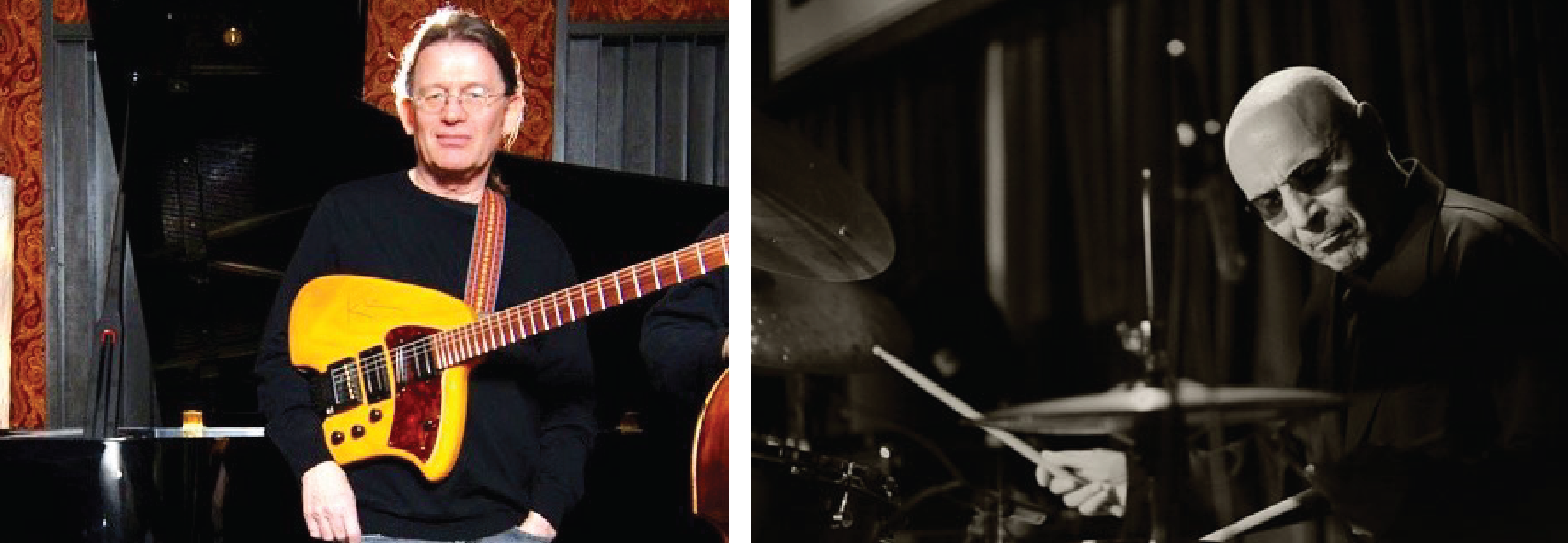
The late drummer Paul Motian was an icon not only among his fellow percussionists, but as a composer in his own right. With credits ranging from the great pianist Bill Evans’ trio and the legendary Keith Jarrett led mid-70s small ensemble, Motian became important in many ways as a mentor and unique presence in modern jazz.
Ann Arbor-based jazz guitarist Carl Michel has recognized the contributions of Paul Motian to the extent he has re-created a complete repertoire of his music. Michel also has his own substantial set list of original music and interpretations of standards, including his favorite compositions written by Chick Corea and Antonio Carlos Jobim - plenty of material to present at his live performances.
In the interim of his research and recording of Motian’s music, he has recently discovered a blog of Cindy McGuirl, Paul Motian’s niece, who is self publishing a book of his compositions. Her blog is titled “Uncle Paul’s Jazz Closet” that has podcasts of radio shows that she curates featuring her uncle’s music. She is publishing a first volume, and if there is enough interest, there will be a follow-up compendium.
Carl Michel started playing electric guitar, switching from cornet, inspired by 1960s rock and blues guitarists. A student at the West Bank School Of Music in Minneapolis, then the Berklee College Of Music, Michel moved to Austin, Texas with his brother, percussionist Robert "Booka" Michel, and became a co-founder of the Creative Opportunity Orchestra, with the innovative lead vocalist Tina Marsh. In 1983, he lived Madison, Wisconsin for a decade, settled in Detroit and then Ann Arbor, where he teaches at the Ann Arbor Music Center, and formed the Carl Michel Group, performing in the Metro Detroit area since 1995.
He has received two Emmy awards in Music Composition and Arrangement based on his work during the 16-part documentary series about 1930s-2000s pioneering female journalist for the Cleveland Plain Dealer Doris O’Donnell Beaufait titled “Cleveland.” His music is featured on film soundtracks "The Fourteenth Victim - Eliot Ness & The Torso Murders,” and “Dusk & Shadow - The Mystery Of Beverly Potts.” He has five recordings as a leader that explores contemporary jazz stylings with either a straight ahead or funky side. The 1998 Carl Michel Group and 2000 Carl Michel Group + CDs received across the board critical review acclaim and nationwide radio airplay.
Those initial CDs are a source of pride for the guitarist in that he received much unexpected praise and attention. “I do want to mention my vinyl LP from the 1980s when I was living in Madison called Food Of Love. That was a trio record. I thought it was more adventurous. When you get your first recording out, it is a sense of accomplishment. It made Cadence Magazine’s Editors Picks. When I moved to Detroit and got to know some people, did some more writing and got to know (drummer) Gerald Cleaver, (bassist) Tim Flood and (saxophonist) Michael Graye, Alex Trajano did the recording, Then I wanted to do a larger ensemble for the Group + and had a good core. So in came (saxophonist) Andrew Bishop, (trumpeter) Paul Finkbeiner and (pianist) Ellen Rowe, and did more extensive writing with more orchestration and arrangement.”
The Creative Opportunity Orchestra led him to believe his arrangements were another valuable aspect of his talent, thus his involvement with film scores. “For ‘Cleveland,’ I had a vision of the Ken Burns documentaries, and I thought I needed more music that related to the period, and I thought more of that time period. There are some elements of darkness like her covering the Sam Shepherd story, and then Doris O’Donnell’s traveling with the Cleveland Indians, unheard of for a woman at that time. And there were stories of women working in factories during World War II. There were many things to think about, but I was given free reign. I was given the synopsis of the series and I wrote themes and sent MIDI files for editing. Some of it was quartet and others were solo piano.”
As far as his connection to Paul Motian’s music, it goes back to his early interest in jazz. I got information from record stores - the first record I had was a Wes Montgomery or Milt Jackson album, then Ralph Towner and Gary Burton. I liked the ECM label and the sound. I fell into John Abercrombie and Pat Metheny pretty hard, but I found a promo copy of Dance by Paul Motian on ECM, which at first I didn’t get it but I loved the spacious sound, and there was no other drummer so unique. Then it was his project Rambler with electric guitarist Bill Frisell and got reacquainted with Keith Jarrett’s American Quartet and Quintet. But it was Paul’s Live In Tokyo that really turned the light on and I realized so much in his music - elements of Thelonious Monk, Eastern European music and Ornette Coleman coming together in his writing and it hit a peak.”
“I tried to get in touch with him, wrote to the record label - his music is not in The Real Book - and he graciously sent me 10-12 copies of his music. I got together with some people and went through this music ten years ago, There’s a lot of depth and you see how the writing is becoming stronger. Then he was not touring, only playing in New York and I went to the Village Vanguard to hear him, Bill Frisell and Joe Lovano. It was religious and mesmerizing. Then he passed away in 2011. Through the internet I was able to meet others who were interested in his music, had copies and was able to exchange music with them. I wrote his music administrator to see if I could get more, was able to, and did the recording project of which I’m proud of.”
As multi-faceted a musician as Carl Michel is, we listeners and his students are benefactors of his vision and broad experience. On the surface as laid back and less interested in image, Carl Michel is a major figure in the Ann Arbor jazz scene we all should pay closer attention to.
Michael G. Nastos is known as a veteran radio broadcaster, local, national and international music journalist, and event promoter/producer. He is a former music director and current super sub on 88.3 WCBN-FM Ann Arbor, founding member of SEMJA, the Southeastern Michigan Jazz Association, Board of Directors member of the Michigan Jazz Festival, votes in the annual Detroit Music Awards and Down Beat Magazine, NPR Music and El Intruso Critics Polls, and writes monthly for Hot House Magazine in New York City.
Carl Michel & Friends with bassist Keith Malinowski and woodwindist Paul VornHagen play The Old Town Tavern, 122 W. Liberty, Wednesday, November 16 at 8 pm. For more information call (734) 662-9291 or visit online at http://oldtownaa.com.
Preview: Olivia Millerschin at Black Crystal Cafe

At just 21 years old, Rochester Hills-based singer-songwriter Olivia Millerschin is more prolific than many artists twice her age. She began 2016 with more than 200 concerts planned, and she says she had somewhere between 70 and 100 song ideas prepared when she went into the studio to record her excellent sophomore LP, Look Both Ways, which dropped in September.
Millerschin has expanded her local following to the national scale over the past several years, thanks to appearing as a quarter-finalist on America’s Got Talent, winning the 2014 John Lennon Songwriting Contest with her anti-romance ballad Screw Valentine’s Day, and touring internationally in support of major label artists like Teddy Geiger, Howie Day and Ryan Cabrera.
Look Both Ways follows Millerschin’s 2014 EP Over the Weather, and it’s her most accomplished record to date. Aided by guest vocalists Michael Grubbs (a.k.a. Wakey Wakey) and Sawyer Fredericks (The Voice), the 9-song set explores deeper and darker emotional territory than she has ever attempted. Musically, the record showcases not only the singer-songwriter’s keen ear for catchy hooks and clever lyrics, but also her skills as a composer. The arrangements are awash with everything from strings to synths, but every element of the production rests on Millerschin’s versatile voice and crafty melodies. Her previous accomplishments notwithstanding, Look Both Ways is sure to establish her as a major talent.
I called Millerschin, just after she wrapped up a photo shoot for Hour Detroit Magazine, to talk about her new record, her career ambitions, appearing on national television, and collaborating with high profile musicians.
Q: Having been on America’s Got Talent and having toured the country with more well known acts, in addition to performing locally, where do you feel most comfortable? Do you prefer larger audiences, or do you like playing more intimate venues?
A: I don't really know. I think a lot of people have their vision set out, and that's really great, but I've always been sort of open to everything. I've been really lucky that I've been opening for singer-songwriters who have more intimate venues that they play, and small listening rooms. I've been spoiled in that way, where I really love those. But every time I go to a big stadium concert, I really enjoy that. So I think I'm just open to making more music and reaching as many people as I can.
Q: You put college at bay to pursue music full-time. I'm curious about what your thought process was there, and if you had any fear or reluctance about making that decision.
A: I went to music school for a year and I really enjoyed it, but I found that I was learning more just studying on my own than I was in my classes. I kept having to turn down touring and other opportunities, so I decided to take the year off. I was really worried about it. I was hoping to make it a sustainable career, and I said, "I'll go back if it doesn't work out." You always worry about disappointing your family and your friends, but I took the year off and it's been nonstop ever since. So I'm very lucky that way.
Q: You also had to put off touring for a bit when you were on America's Got Talent. How did that make you feel?
A: That was weird because I love playing live more than anything. That's just where you get to connect with people in general, and you get to grow as an artist. America's Got Talent is a completely different experience than anything I've ever been a part of. It was good from the exposure standpoint, but it definitely held us back in the other aspects of our career.
Q: What did you take away from that experience?
A: It definitely made me see more of the business side of the industry, because I had always dealt with people who are just in it for the music. I was a teenager, so it opened my eyes to people who see it as a business and see you as a business, and it just made me more aware of everybody, I guess.
Q: You seem to work well under pressure, and you often put yourself in challenging situations. Where does that drive come from?
A: I feel like I was a lot better at it when I was younger, because I just like, "I'm gonna stand up on the stage and sing my songs for people. No big deal!" I didn't realize what I was actually doing. It depends on the situation. Sometimes I'm like, "I can handle this." It's just a matter of convincing yourself that you can do something, because the insecurities are what eats me alive. I've always wanted to one-up my previous accomplishment.
Q: Your new album has a very polished sound, but it also sounds strikingly intimate. How did you achieve that balance?
A: It kind of goes all over the map. I kind of write more about other people's experiences than my own. I just think it's easier to be subjective that way. I know a lot of artists write singles so they can pitch them for radio, and I've never thought about that. It's very smart as far as marketing, but my writing's always been whatever I'm seeing around me at the time. I had probably 70 to 100 songs ready for the record, and I showed them to the producers, and they liked those songs the best.
Q: Tell me about the process of recording this album. I know you did most of it in New York. How did that differ from the way you've recorded in the past?
A: My first record was self-produced in one of my friends’ studios. That was very hands-on. We were super young. I think I was 15 or 16 at the time. So we were just kind of experimenting. And the second one I didn't really have much of a hand in. This one I collaborated with two producers out of New York, and I got to really be a part of the whole process. It was my music, but I got to control where the sound went. We did one song in Detroit too, but I think it sewed the whole thing up when I was open to what they were saying, and when I could throw in, "Oh, let's keep this aspect a little more settled down."
Q: Do you have any plans to move to a bigger city to be closer to the music industry?
A: I'm living with my parents right now. I'm trying to save up to get a house or something around here. I thought about moving out to New York because when I was working on the record I was living out there, but it just doesn't make sense, and I just like Michigan so much.
Q: You have two well known guests on the album: Michael Grubbs and Sawyer Fredericks. How did you meet them and get them in the studio to sing with you?
A: Michael Grubbs is a really phenomenal songwriter. His band is Wakey Wakey. He was one of the two producers that produced the record. The song that I have him on I originally just wrote for a solo song, and he was singing some backups and I was like, "Do you want to be featured on this one?" He was really happy to do that.
Sawyer I met through a project I did for Mitch Albom. Sawyer and I are both on the soundtrack for one of Mitch's books [The Magic Strings of Frankie Presto], and we just kind of kept in touch lightly. I had this song that I really imagined a couple different voices on, but especially his. So I reached out to him, and I didn't really know what he would say, and he was like, "Absolutely!" He drove into New York, and we worked on it. I'm just really lucky [laughs].
Q: How did you come to work with Mitch Albom?
A: It came about when I was on America's Got Talent, or maybe a little before then. I was promoting a couple of different things, and I went on his radio show. I don't know how it happened, but he somehow decided that he liked me. He's been nothing but incredible. Ever since then, every time he's got a project or he's producing a movie, he'll call me and have me do something for it. He had this soundtrack for his book, and it was all these huge artists. They had Ingrid Michaelson on it, they had Tony Bennett on it. He asked me if I could just be, like, his local artist on the CD, so I did.
Q: Turning back to your new record, Long Weekend is the obvious single, but it also seems like the emotional center of the album. Where were you coming from when you wrote that?
A: That was my favorite one off the record, which is saying a lot [laughs]. Most of my music in the past has been upbeat, and part of that's just age. Of course songs I write when I'm 14 are going to be different from songs I write when I'm 20. I wrote that song not only about personal experience, but just about everybody. I think everybody has that one person that they think is going to be the one, and then they get away or something like that. That one was really tough to write. I wrote most of it in the studio, because I showed the guys the chorus of it. That was all I had written, and they were like, "You have to finish that one!" So I kind of rushed the process, but I really like that one.
Q: The record sounds very cohesive, both thematically and sonically. Was there any kind of overarching theme or concept you wanted to express?
A: I think the whole point of this record is perspective, and being able to find some good in something that's seemingly bad, or even just understanding and coming to terms with the bad. The older I've gotten, like anybody, I've experienced more not only heartbreak, but just real life experiences, and death and loss. So I felt like that stuff needed to be talked about, but it didn't necessarily need to be mourned. It needed to be discussed in a way that people could understand and relate to.
Q: What are your plans for the rest of the year, now that this record is out?
A: I'm doing some promotion for the record. I'm hoping to get it in movies and TV. I'm doing a ton of touring this year, so I haven't had much time to be writing a new record. But I'm ready to do that. After two months of living with this one, I'm like, "Oh, why not start a new one" [laughs].
Steven Sonoras is a writer living in Ypsilanti.
Olivia Millerschin and her full band perform at 7:30 p.m. Friday, December 2 at the Black Crystal Cafe, 3653 Santa Fe Trail. The show is private to registered guests. Tickets are $25, which includes complimentary hors d’oeuvres and beverages.
Preview: Father of folk storytelling has more tales to tell
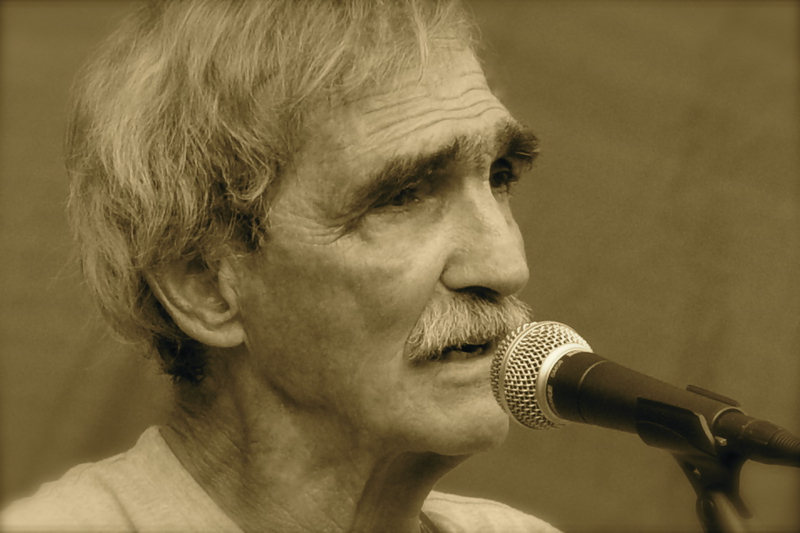
Ann Arbor is blessed to have many veteran acoustic musicians grown from experiences in the old days via performing at the original Ark Coffeehouse on Hill Street and the late lamented Mr. Flood’s Party. They have lived to give us an overview of pre-technology years and simpler times.
Jay Stielstra, a native of Ludington, is the local founding father of this movement. Borne of the 1960s protest movement and the so-called folk music boom, he has written some one hundred fifty tunes about the life and times of legendary or fictional figures dealing with heartbreak and triumph, and the outdoors lifestyle that is much more rural routed and natural than the digitally produced country music of today. In his eighties, the guitarist and vocalist still has a lot to say based on his experience, his love of the Upper Peninsula of Michigan, and his longtime affection for Ann Arbor as not only the city of trees, but the beauty that still surrounds the outskirts of our city, untouched by strip mall mentality.
Stielstra’s magnum opus “North Country Opera,” as well as “Tittabawasee Jane,” “Old Man In Love,” “Escanaba,” “America, America,” and “Prodigals” are full-length theatrical musical dialogues that have stood the test of time. So too have songs like “Spikehorn,” about the Harrison, Michigan iconic backwoods coal miner and bear whisperer/preservationist/advocate John “Spikehorn” Meyer, a timely poem for the season titled “Autumn," the poignant “November Love” and “The Most I’m Missing,” a sly spinoff on “Farmers Daughter” titled “Baker’s Daughter,” and locale-driven tunes like the recently penned “Cut River Bridge” and “Manistee Waltz.”
Stielstra’s current ensemble consists of a cadre of admirers, followers, and talented players he has essentially mentored. They include guitarist/vocalist Chris Buhalis, mandolinist Jason Dennie, slap bass expert David Roof, harmonica master Peter “Madcat” Ruth, and rising star songwriter, guitarist and singer in her own right Judy Banker.
We spoke to the veteran musician and award winning playwright /actor from Manchester during a rehearsal session prior to his upcoming Ark show. The former Ann Arbor High/Pioneer and Huron High School football coach, public school teacher, and carpenter is also as humble as a Buffalo nickel, and responds with equally laid back demeanor about his status as an icon and the depiction of his sound as easy-going mosey down music.
Originally influenced by Woody Guthrie and Hank Williams, Stielstra also mentions the music of the Washington First Baptist Church. “A lot of my tunes, the patterns and progressions come from those old gospel songs. I’m not a religious person at all, but my parents were during World War II. I loved those tunes and still do. My mother played piano and my four years younger brother Elden Stielstra still is a tremendous trumpet player in Grand Rapids who plays Dixieland and big band music. He was the musician in the family,” he chuckles, “and I was the jock."
“I started singing when my daughters were small,” he continued. “We didn’t have a piano then so I got a guitar and said I’ll see if I can play that and learned to strum a few chords. Then the folk music thing came on - The Kingston Trio, Bob Dylan and Pete Seger. Most all of those tunes were simple. In the seventies there were places to play in town - it just went from there. I was in the schools, then retired from coaching, became a carpenter and did year round what I did every summer.”
Jay got into theater, building sets at the old Tech Center and original Performance Network where the YMCA is now located. This led to the North Country Opera and his one man show Old Man In Love.
But an accident curtailed his performing career: “I stopped playing, had to relearn and retune the guitar, and eventually was fortunate to play for a long time with excellent musicians like mandolin player Kelly Schmidt, bassist Gary Munce, David Menefee, Eric Nyhuis, Judy and John Banker - we had a trio together for four years. We worked with Drew Howard out of Lansing a number of times; Jason whenever we can because he’s a full time musician; and now Madcat - we got together with him last year and will again this year. He’s great.”
As far as a blues component, he added, “Yes, at one time in my life, and I had my heart broken a lot of times. It has influenced a number of songs I have written. Why it happens or how it happens, I have not a clue.”
Amazingly Jay Stielstra has only two recordings to his credit, but a long standing legacy of live shows all over Michigan and other far flung places leads him back to his home and to us, hopefully for many more years to come.
Michael G. Nastos is known as a veteran radio broadcaster, local music journalist, and event promoter/producer. He is a former music director and current super sub on 88.3 WCBN-FM Ann Arbor, founding member of SEMJA, the Southeastern Michigan Jazz Association, Board of Directors member of the Michigan Jazz Festival, votes in the annual Detroit Music Awards and Down Beat Magazine, NPR Music and El Intruso Critics Polls, and writes monthly for Hot House Magazine in New York City.
Jay Stielstra & Friends play The Ark, 316 S. Main Street, on Thursday, November 17 at 8 pm. For more information call (734) 761-1800 or (734) 761-1818, or visit online at http://theark.org.
Preview: Isaac Levine's CD Release Happening at Arbor Vitae
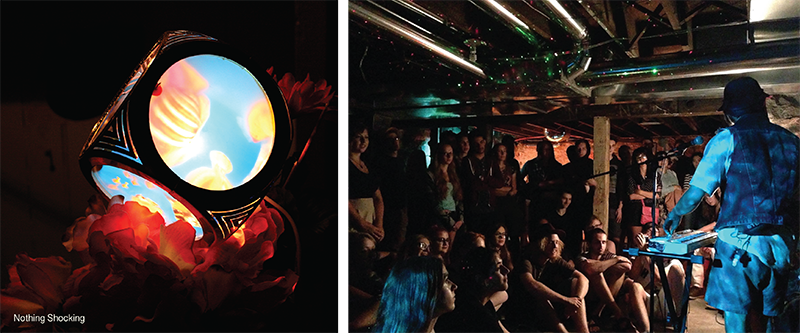
Local musician Isaac Levine is hosting a record release party for his first album at Arbor Vitae—a unique music-and-performance-oriented loft on State St. where Levine and five others reside—on November 4. The album, Nothing Shocking, is one he’s worked on for over a year, and he’s recruited a multitude of local performance artists, storytellers, and musicians to help him celebrate its release. For the first few hours of the event, attendees can immerse themselves in two different performance spaces: a storytelling stage and an improvisational group area, and beginning at 11:00pm, Levine will play his solo set. This free event is a great opportunity not only to hear Levine’s music in an up-close-and-personal venue, but also to get a taste of some of the more obscure, younger local talent in the city.
The diversity in performances at the event is impressive. The Shade Brigade, a local sit-down comedy group comprised of Demario Longmire and Thomas Kratofil, will dialogue on child birth and more. Kit E. Parks will read samples of her work, complete with tongue twisters. Of Parks, Levine says, “She manages to approach the tragedy and comedy of her life in a way that shares the joy of living.” Evicholas Nolpe will read stories about “moseying around,” while Katie Brown and Noor Us-Sabah will perform their piece “TOYS.”
Levine’s music is a little bit early Andrew Bird-like, trippy and shadowy without being overly synthetic. He juxtaposes his slow “How Not to Break Someone” song with a video of real worms wrestling gummy worms, the shots moving in and out of pixilation. This writer hopes that he will find a way to play the video behind him when he performs at Arbor Vitae, if only so that the crowd there can enjoy the unsettlingly disgusting experience of seeing live worms wrestle candy ones.
Arbor Vitae in and of itself is a reason to attend the event on Friday. For over 50 years, the loft space has housed an eclectic group of students and performers. Concerts, art show openings, and other performances are held there regularly. Created by world traveler Richard Ahern in the 1960s, the loft was originally intended to be an architects’ studio, but the offices inside gradually got converted into bedrooms and artists and musicians began calling Arbor Vitae home during the Peace Movements of the 60s and 70s. Now, six people always live in the loft, navigating their lives around instruments, art pieces, and whatever past residents have left behind. These have included, at various points in time, an impeccably organized collection of VHS tapes, a piano, and a drawing that reads simply “Hella Taco.”
Overall, Friday’s event offers a cool (and free!) chance to check out what the young people of Ann Arbor are up to these days, most notably musician and host Levine, whose passionate enthusiasm for his music and the talents of others will surely make the evening a fun one.
Elizabeth Pearce is a Library Technician at the Ann Arbor District Library.
Isaac Levine hosts a release party for his record, Nothing Shocking, from 9pm-12am on Friday, November 4 at Arbor Vitae, 336 ½ S. State St. No cover.
Review: SMTD @ UMMA Concert Series – Chamber Choir Performance

One of the things I love most about the arts is the way they can be beautifully connected. On Sunday, October 23, the arts of music and photography combined when artist Catie Newell's exhibition Overnight at the University of Michigan Museum of Art inspired a University of Michigan Chamber Choir performance at the museum. The performance was themed around the concepts of darkness and light, in honor of Newell's work.
The award-winning conductor, Dr. Jerry Blackstone, opened the concert by encouraging the audience to review the exhibit after the performance. Blackstone also presented the listeners with the arrangement of the concert: the theme of darkness to be set in the first half of the performance, with light theme being presented afterwards.
This was a sensational concert. The vocalists were some of the most talented musicians I’ve heard. With each vocalist standing beside a vocalist with a different voice part, the whole choir was beautifully balanced. In every song, you could hear the gorgeous melodies each section could be proud of. In some pieces, the harmonies were so tight that the sound was like how I’d imagine water running would sound as it splits from one stream into many – effortlessly smooth. I could have believed in magic that night the way Dr. Blackstone used his hands, like a magician conjuring sonic enchantment out of thin air.
The musical selections were overwhelmingly beautiful. From pieces totally new to the ones more familiar, each song was a joy to the ear. The Rachmaninoff “Bogoroditse Devo (Ave Maria)" is one I’ve sung before, but this performance of the piece still knocked me off my feet. If you consider yourself a music lover and have never heard it, get thee to YouTube. A new piece I heard that night was “Ev’ry night, when the sun goes down” arranged by Gwenyth Walker. With the soulful tenor solo and the gorgeous choral sections, I had to close my eyes and focus all my senses on those heartwarming sounds. I attended the concert with someone totally new to choir concerts, and even he had chills during that piece.
I heard other favorites, like Brahms’ “Der Abend” and the “O nata Lux” from Morten Lauridsen’s Lux Aeterna, but overall my favorite had to be “Northern Lights” by Eriks Esenvalds. As hand-chimes came to the stage along with wine-glasses filled with water, Dr. Blackstone introduced this piece as an expression of first seeing the lights from the perspective of a ship crew, previously bunkered down under the docks in darkness. Throughout the piece, the choir mimics the lights with their shimmering and smooth tones as the notes rise and fall. I could also hear the urgency in the captain’s voice when the choir sings “Come above,” the part of the story just before the crew rises to see the night’s spectacle. During the part of the song when the crew finally climbs up into the night from below, the choir bursts into the poetic line that Dr. Blackstone prepared us for before beginning: “the sky was aflame.” From then to the end, the chimes and water glasses are played to create a tinkling, ringing sensation that sends your thoughts to the shine of those lights. The whole piece was incredible – it melted my heart.
Not only was the music stunning - the atmosphere was equally appealing. A long time choir geek myself, I’ve sung in plenty unique places, but setting the performance in the lobby of UMMA was a spectacular experience. The space gave the effect of a European cathedral, with the glass above, the pillars all around, the resonation of the room, even with the choir beginning along the balconied edge of the second floor (just as if they were singing in a cathedral’s choir loft). Seriously, I could not have asked for a better way to end the weekend.
Liz Grapentine is a desk clerk at AADL. A graduate from Oakland University with a major in Music Education and a minor in English, Liz enjoys all the arts in every form. Liz is also a true Ann Arbor townie and a proud patron of the library since 1995.
Halloween Events Around Ann Arbor
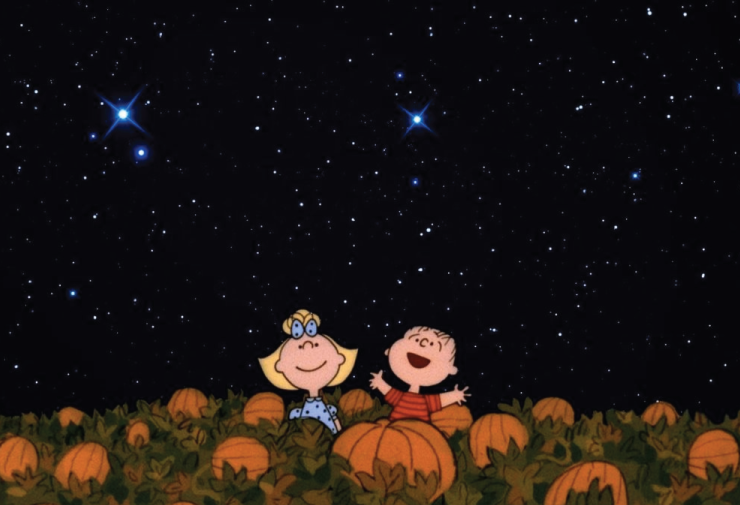
If you're looking for some fun events around town for the Halloween weekend, read on for creepy cemetery tours, devilish dance parties, shadow puppet theatre, and more Halloween arts & culture:
Book-Themed Halloween Costume Contest
Monday, October 31st - 10:00am-9:00pm
Literati Bookstore - Ann Arbor, MI
Halloween at the Market
Saturday, October 29th - 12:00pm-2:00pm
Ann Arbor Farmer's Market - Ann Arbor, MI
Highland Cemetery Lantern Tours
Sunday, October 30th - 7:00pm-9:00pm
Highland Cemetery - Ypsilanti, MI
Shadow Puppet Double Feature
Saturday, October 29th - 9:00pm-11:00pm
Triple Goddess Tasting Room - Ypsilanti, MI
Cultivate Masquerade & Costume Bash
Friday, October 28th - 8:00pm-12:00am
Cultivate Coffee & Taphouse - Ypsilanti, MI
Black Cat Cabaret - Neighborhood Theatre Group
Friday, October 28th and Saturday, October 29th - 8:30pm
Bona Sera - Ypsilanti, MI
Halloween Treat Parade
Monday, October 31st - 11:00am-5:00pm
Main Street Area - Ann Arbor, MI
A2DC Presents: Hullabaloo Halloween Spooktacular
Sunday, October 30th - 6:00pm-10:00pm
Ann Arbor Distilling Company - Ann Arbor, MI
The Bang! Halloween Dance Party
Saturday, October 29th - 9:30pm
The Blind Pig - Ann Arbor, MI
Nightlife Arcade Gaming Spooktacular
Friday, October 28th - 6:00pm-9:00pm
The Forge by Pillar - Ann Arbor, MI
Events Roundup: Theo Katzman, Ofrenda Altars, & More
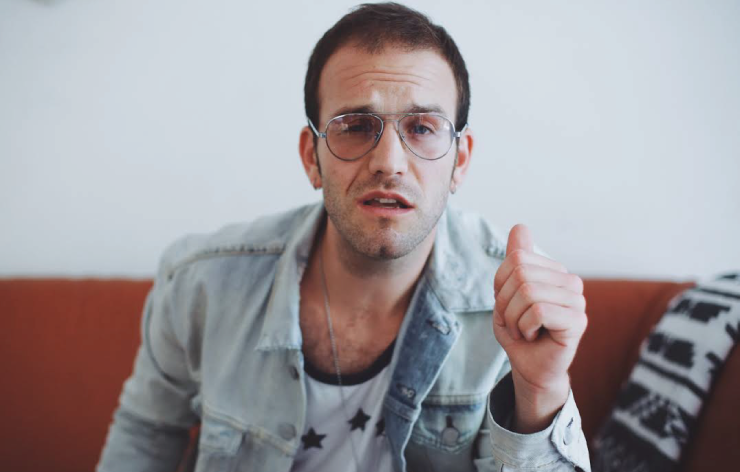
UMS Wallace Blogging Fellow Adam DesJardins recommends some great upcoming musical performances and art installations. From the Arab-American National Museum's exhibit of graphic novelist Leila Abdelrazaq's work to a Blind Pig appearance by Vulfpeck's Theo Katzman and collaborator Joey Dosik, he's got your early November booked.
“Thou shalt bringeth the funk” is a quote no one ever said to me. Luckily, funk-bringers Theo Katzman and Joey Dosik will be doing just that when they grace the stage at the Blind Pig in Ann Arbor on November 5." writes DesJardins, in case you needed more of a reason to buy tickets for the show.
Catch more of UMS Wallace Bloggers DesJardins and Marissa Kurtzhals in their weekly roundups!
Preview: ypsiGLOW
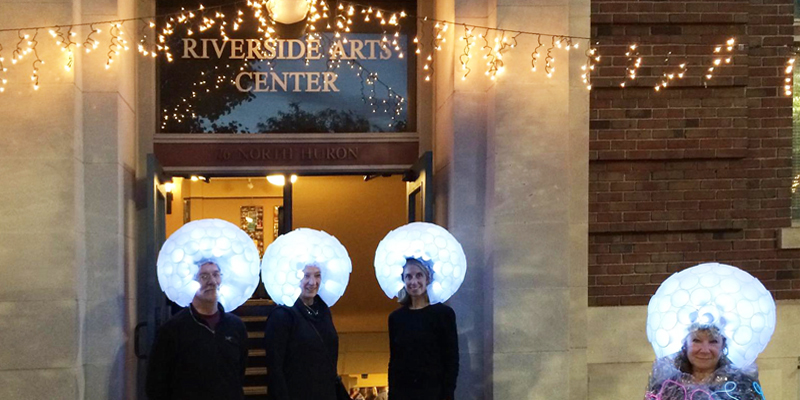
YpsiGLOW--the first annual family-friendly, multi-sensory light, art, and music celebration of fall--will be held in downtown Ypsilanti this Thursday, October 27. Festivities commence at 5 pm at the Main Branch of the Ypsilanti Public Library at 229 W. Michigan Avenue with a preGLOW kid's costume party. Treats, activities, games, and a costume contest will be followed at 6:30 pm by a walking costume and luminary parade from the library to the nearby ypsiGLOW block party on Washington between Pearl and Michigan Avenue.
As a DJ spins tracks from his scissor-lift perch, a UV light-activated dance floor and blacklight animated alleys provide space for costumed adults and kids to move with the music. YpsiGLOW artists will perform on the street and in shop windows. Blacklight body artists will be on hand to paint faces and make hair glow in the dark. Also featured will be a blacklight reactive superhero mural, a giant luminary skull, a six-foot-tall grizzly, jack-o-lanterns, shadow puppets, and much more. Dancers from the WCC Performing Arts Department and the EMU Dance crew will perform, and films and projections will light up the night. Costumes are encouraged, trick-or-treaters are welcome and stores will be open until 9:30 pm. There is ample free parking on streets and in city lots for the event.
And for adult GLOWers who want to continue the party, there is an afterGLOW in the spooky black cellars of Bona Sera with DJ Ryan Gerald until midnight.
It took a village to get this event going. It began two years ago when members of the Washtenaw Convention and Visitors Bureau, The Downtown Association of Ypsilanti and Wonderfools Productions (of Ann Arbor Festifools fame) decided a Halloween-season festival would be a great addition to Ypsilanti's already very successful First Fridays. Wonderfool organizers Shary Brown, Mark Tucker, Jeri Rosenberg, and Adriana Zardus began meeting with creative members of the Ypsilanti community, the Ypsilanti Public Library staff, and local educational institutions as well as with civic leaders. Together, they developed a plan to leverage the outsize creative capital of Ypsilanti, the under-utilized downtown real estate, and a little seed money to create the one-night annual cultural festival that is ypsiGLOW.

I asked some members of the Wonderfool production team about their process:
"Two of our first partners were Barry LaRue and Will Hathaway of Riverside Arts Center. They, in the space of less than a week, had sent out email introductions. So we spent two and a half to three months just meeting people," says Shary Brown.
Adriana Zardus adds, "Those three months were really important--we called it our discovery phase. We weren't prescribing any ideas. We were just saying that this is what our organization does: we connect different businesses, artists, and community organizations together to make their own creative vision... There's such a wealth of artists and creatives and community leaders that it was the easiest thing in the world to let go of the creative reins and hand it over.”
One thing that was very clear to the team from the start though, was that the event had to have its own unique Ypsi character that to showcase the strengths of this diverse artist, musicians, and creatives-rich community, starting with the choice of a name. They came up with ypsiGLOW in consultation with community members. It was an instant hit.
"GLOWing is positive, it's artistically descriptive and appropriate for the season,” says Shary Brown.
To prepare for the big night, 23 ypsiGLOW workshops have been held by community and arts organizations like Ozone House, Project 23, FLY Children’s ArtCenter, and many others. Masks, jack-lanterns, luminaries, and giant light creatures are now ready to make the night GLOW.
YpsiGLOW will get its first airing this Thursday but certainly not its last. The Wonderfool production team and Ypsi’s artists, educators, businesses, and community leaders are hoping to start an annual tradition that will bring everyone in the Ann Arbor/Ypsi area together for a satisfying shared community art experience for all ages.
K.A. Letts is an artist and art blogger. She has shown her work regionally and nationally and in 2015 won the Toledo Federation of Art Societies Purchase Award while participating in the TAAE95 Exhibit at the Toledo Museum of Art. You can find more of her work at RustbeltArts.com.
The first ypsiGLOW is Thursday, October 27, 2016, from 6:30 pm to 9:00 pm at Washington Street (between Pearl St. and Michigan Ave.) in Ypsilanti. Glow-gear and costumes are strongly encouraged.
Review: Gimme Danger
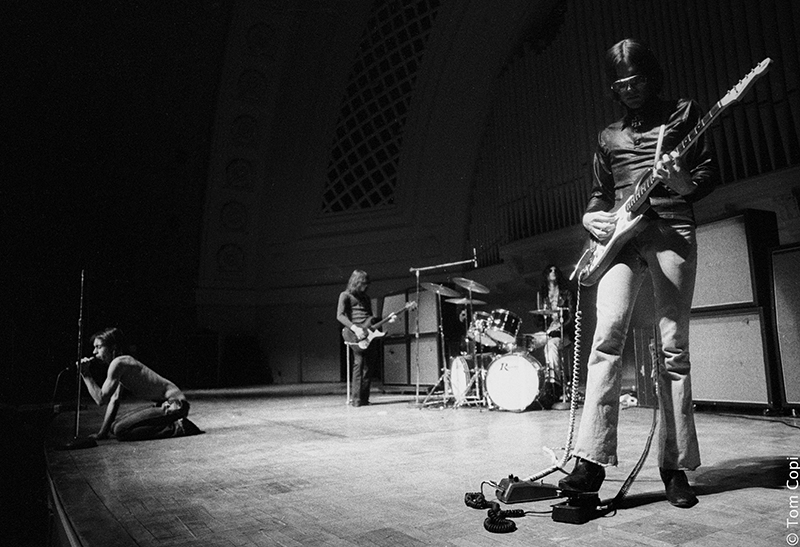
When Ann Arbor punk pioneers the Stooges played a tribute show for their deceased guitarist Ron Asheton at the Michigan Theater in 2011, arthouse director Jim Jarmusch was in the house. Having announced that he was beginning work on a documentary about the Stooges just the year before, one might have guessed that the Cuyahoga Falls-born director behind Night On Earth and Broken Flowers was planning to include the Ann Arbor show in his film.
But the amusing stories of Jarmusch's terse interactions with townies are the only real creative legacy the director left behind from his Ann Arbor visit. There's no footage from the Asheton tribute in Gimme Danger, Jarmusch's Stooges documentary, which will open in Detroit on Oct. 28. And in many ways, that's for the best.
Jarmusch was at the Asheton tribute, and presumably has been around for other moments in the lives of Iggy and Co. over the past decade-plus, as a friend and casual observer, not a documentarian. Jarmusch first worked with Iggy Pop, the Stooges' legendary and arrestingly bizarre frontman, on a standout scene from Jarmusch's 2003 narrative film Coffee and Cigarettes. In 2010 Pop personally requested that Jarmusch make a documentary about the band. The resulting film plays not like a staid rock biopic but like an intimate conversation between friends, a fun, loosey-goosey retelling of the tumultuous tale behind one of the most influential bands in rock.
Jarmusch begins the film in 1973 with one of the band's apparent endings. At the time, the Stooges had already released their three seminal albums The Stooges, Fun House, and Raw Power, but as a title card puts it, "They were dirt." Critically maligned and dragged down by Pop's drug abuse and increasingly unmanageable behavior, the band called it quits in 1974. From there, Jarmusch jumps back to the Stooges' childhoods, examining how they got to that low point and how they bounced back in 2003 to begin touring extensively in response to broad recognition from a host of younger artists. The stories, from the tale of Pop calling up Moe Howard to request his permission to use the name "The Stooges" to Pop's explanation of Soupy Sales' influence on his minimalistic lyrics, are outrageous and often hilarious.
Jarmusch's focus is relatively narrow. He interviews almost no one other than Iggy and the Stooges themselves (including Minutemen bassist Mike Watt, who toured with the band throughout the 2000s). The interview settings are almost laughably casual; Pop gives one of his interviews in a laundry room, and he idly plays with his bare feet as he talks. Guitarist James Williamson appears to have given his interview in a public bathroom, guitar in his lap.
The director doesn't attempt to editorialize or add much of his own flair to the material. Compensating for the lack of archival photos or footage of the band, he frequently makes amusing use of period-appropriate stock footage and even a couple of animated sequences to illustrate the Stooges' tales of their misadventures. But overall he seems to revel in the entertainment value of letting the Stooges tell their own stories. When you've got the gaunt, bug-eyed, slightly anxious Pop alongside the gaunt, hood-eyed, utterly deadpan drummer Scott Asheton (now deceased), what better method than to just wind these two characters up and let them go?
The relatively straightforward documentary may seem to fit oddly into the oeuvre of the director who made such visually striking and idiosyncratic films as Mystery Train and Only Lovers Left Alive, but in a way it also occupies its own very singular territory. The tale told here is unlikely to throw Stooges aficionados any new curveballs; Jarmusch himself has noted the difficulty he had finding any new footage of the band to include in the film. And the film's relative modesty (especially given its frequently outrageous subjects) seems unlikely to cause enough of a stir to attract many Stooges newbies to the theater. Like any of Jarmusch's other films, Gimme Danger is perfectly happy being exactly what it wants to be – a thoroughly fun, no-frills, firsthand account of the story behind one of rock's greatest bands – and nothing more.
Patrick Dunn is the interim managing editor of Concentrate and an Ann Arbor-based freelance writer whose work appears regularly in Pulp, the Detroit News, the Ann Arbor Observer, and other local publications. He ain't got time to make no apologies.
Gimme Danger premiered last night, October 25th, with a special screening at the Detroit Film Theater (DFT) featuring Iggy Pop and Jim Jarmusch. It opens officially Oct. 28 at the Detroit Film Theater, and will expand to a wider release on Nov. 4.
Preview: Celebrating 20 Years of Edgefest in One Year

To do anything for twenty consecutive years is an accomplishment to be lauded with high praise. When it involves the cutting edge of creative improvised jazz, it’s an even larger feather in one’s cap.
Twenty years of presentations at Edgefest will be summarized in this year’s event. Bringing back longstanding favorite ensembles, emphasizing our local contingent of progressive-thinking musicians, and adding new twists and turns other events might not dare attempt bodes well for future generations of patrons and performers to continue looking up while getting down.
Over the decades, Edgefest has received national and international acclaim for their risk-taking bookings. Substantial grants have financially buoyed their ambitious line-ups, astute listeners have reveled in the innovative music heard here and nowhere else in one setting, while many musicians look forward to their return to Ann Arbor. Even throughout the year with the regular Music At The Edge series, Michigan audiences always have the opportunity to hear this music during any given season.
What is creative improvised jazz? It takes on many forms, from pure spontaneity to open ended composed work that goes beyond notes on a page. It can be serene or jarring, pastoral or jagged, even incorporating true new music based on folk forms from other countries melded with the swing, blues, and improvisation of finely tuned American-based jazz. For sure every flavor is different, yet each somehow holds a universal appeal that even the uninitiated can appreciate if they take the time--and the equally bold step--not to pre-judge but instead to just listen deeply.
Pre-Edgefest events have already taken place. Saxophonist Dave Rempis and Gunwale played Encore Records October 14. A week later the substantive duo of drummer Gerry Hemingway and trombonist Samuel Blaser performed at Encore October 7. That afternoon the University of Michigan hosted a piano duet between Kris Davis and Craig Taborn and included a sampling of her new CD Duopoly featuring the two pianists and others with Davis in strictly composed or improvised duets.
Trumpeter Mark Kirschenmann and keyboardist Stephen Rush’s electric Miles Davis tribute band Big Fun played the University of Michigan Museum of Art October 2. Both Kirschenmann and Rush are part of Edgefest’s proper line-up.

What sets Edgefest apart is the inclusion and emphasis of our local area performers, including recent Ann Arbor transplants such as percussionist Matthew Daher and bassist Will McEvoy; saxophonists Marcus Elliot and Tim Haldeman; the fascinating Balkan fusion group Ornamatik; U-M professors Kirschenmann, Rush, and Ellen Rowe; U-M graduate (and student of Geri Allen) Michael Malis, who was at the A2 Jazz Fest with Andrew Bishop and has been touring and appearing in New York City in support of his recent debut CD Lifted from the No of All Nothing; Tad Weed’s Freedom Ensemble, celebrating the music of pianist Herbie Nichols; tabla drum master John Churchville; Michigan’s famed Northwoods Improvisers; multi-instrumentalist Ken Kozora; multi-woodwind player Piotr Michalowski with the potent MoTreetown Collective and their three horn front line reminiscent of the Griot Galaxy; keyboardist Kenn Thomas; and U-M students performing large ensemble works written by John Hollenbeck.
The festival has gone though its share of trials and tribulations. At times crossing international borders has been tricky for musicians. Late arrivals or last minute cancellations always present timing problems, especially during the tragic and memorable Hurricane Sandy. And the festival has lost a few mighty performers who have passed away, including European multi-instrumentalist favorite Lars Hollmer, Chicago tuba player Aaron Dodd, trumpeter Paul Smoker, bassist Dominic Duval, and Dutch master Willem Breuker.
A special set during this year’s fest will come from the group TranceFormation in tribute to pianist Connie Crothers, who recently passed on. A disciple of Lennie Tristano, Crothers was initially in Ann Arbor nearly ten years ago when the International Society for Improvised Music hosted their annual conference here, and then played at KCH. A tribute to Crothers will be staged, featuring vocalist Andrea Wolper, bassist Ken Filiano, and saxophonist Vinny Golia, celebrating his 70th birthday.
Pianist Kris Davis will be the clear star of Edgefest for this year, as part of a tour supporting her 2014 trio CD Waiting For You To Grow on the Clean Feed label with drummer Tom Rainey and bassist John Hebert.
Then again, there are favored and featured artists returning, most notably Golia and Filiano in other bands; the legendary Trio 3 with Oliver Lake, Reggie Workman, and Andrew Cyrille; acclaimed trumpeter Wadada Leo Smith and bassist John Lindberg; John Hollenbeck’s Claudia Quintet; bassist William Parker; saxophonist Tim Berne with the wild electric guitarist David Torn; violinist Jason Kao Hwang; koto expert Miya Masaoka; the top notch co-op collective Conference Call; and, especially, the participation of Edgefest co-founder David Lynch, who is consultant for 2016.
KCH’s Deanna Relyea has seen all the changes, borne the brunt of audience shifts and trends in modern music, yet continues to be motivated to set up venues, book musicians, and support the event. Like her Nash Bash, which celebrated its tenth year in 2016, these ideas endure because audiences want to hear the music.

The inaugural edition in 1997 featured Tim Berne, Rova, Charlie Kohlhase, and Dave Douglas in a one-day event. Things have expanded beyond everyone’s expectations, even the originators Lynch, Relyea, Jules Ryan, and Damon Stanek.
In an interview with creative singer, founder, and artistic director Relyea, she talked about the Edgefest audience, and KCH’s objectives. “I think the Concert House is here to bring music ahead, whether it be classical music, jazz, or contemporary music in general. So it’s our mission to do new music. I don’t think there would be such an audience for this music if not for us, and people would not be as aware of it. I most certainly have grown into it. I feel like I’ve had my graduate education.” In recent years for instance, Relyea has become a part of Jason Kao Hwang’s vocal project on the Innova label Voice.
Audience development is key to the broadening of all horizons. “This is not a festival drawing thousands of people,” she added. “Even people in New York City don’t have this audience, but in Ann Arbor we started with a one day festival with Dave Douglas.” Now it’s nearly thirty bands in at least six different locales, not including schools.
Another aspect of Edgefest is that it brings back former area players like bassist John Lindberg, and especially ex-Ann Arborites like the renowned and brilliant pianist Craig Taborn, who will accompany two different groups and play a stand-alone solo piano set. “We are all proud of that. It’s really great to have them. Also our Saturday afternoon slot specifically emphasizes our area musicians, in this case the MoTreetown Collective and Northwoods Improvisers."
Then there’s at least one European, Canadian, or foreign group, in this case Sylvaine Helary’s Spring Roll, direct from Paris, France, and on tour in the U.S., who have a double CD out on Ayler Records Printemps/Spring Roll. Helary wields four different flutes and sings in a manner that has been described as a cross between Nina Hagen and Iva Bittova--sassy and minimalist-- while the band has been depicted as a hybrid between theatre, music, sound, poetry, and political manifesto. “I really look forward to that,“ Relyea said. “People love her, and in my conversations with her she seems charming.”
There will be commissioned works written by violinist/violist Jason Kao Hwang and his Burning Bridge Ensemble written and premiered specifically for this 20th Edgefest, featuring strings, brass, the Chinese erhu, and pipa. Another highlight should be the debut of trumpeter Mark Kirschenmann’s All Sanctuary trio featuring the trumpeter Jennifer Ellis on harp, and Churchville’s tabla, while Stephen Rush’s original Piano Concerto will be played prior to a scheduled Big M Records recorded document.
If jazz is indeed the music of surprise, there will be a thousand such moments in store at the upcoming Edgefest celebration.
Michael G. Nastos is known as a veteran radio broadcaster, local music journalist, and event promoter/producer. He is a former music director and current super sub on 88.3 WCBN-FM Ann Arbor, founding member of the Southeastern Michigan Jazz Association, Board of Directors member of the Michigan Jazz Festival, and writes monthly for Hot House Magazine in New York City.
Edgefest takes place October 26-29 at the Kerrytown Concert House, 415 N. Fourth Ave. for main performances, along with other locales. Workshops will be at the Community High School, Scarlett & Clague Middle Schools, and the University of Michigan School of Music.


































